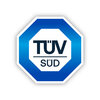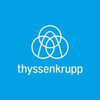Filter interviews by
Caterpillar Inc Engineer Trainee Interview Questions and Answers
Caterpillar Inc Engineer Trainee Interview Experiences
1 interview found
I applied via Campus Placement and was interviewed in May 2023. There were 3 interview rounds.

We were given a topic on which we had to discuss for about 15 minutes the topic was "whether AI is a boon or a goon"
(2 Questions)
- Q1. Most of the questions were related to my project. what is a diode?
- Q2. What is the meaning of transmitter.
- Ans.
A transmitter is a device that sends out signals or information in the form of radio waves, electrical signals, or light.
Transmitters are commonly used in communication systems to send data over long distances.
Examples of transmitters include radio transmitters, television transmitters, and cell phone towers.
Transmitters convert information into a signal that can be transmitted through a medium such as air or cables.
Interview Preparation Tips
Top trending discussions






Interview questions from similar companies

I applied via Company Website and was interviewed before Jul 2021. There were 2 interview rounds.

(2 Questions)
- Q1. Why do you want to change ur job
- Q2. Y should i hire you?
Interview Preparation Tips

I applied via Referral and was interviewed before Nov 2020. There were 3 interview rounds.
Interview Questionnaire
1 Question
- Q1. What is the current expectation
- Ans.
The current expectation varies depending on the industry and market trends.
Expectation for product quality and innovation is high
Customers expect personalized experiences
Sustainability and ethical practices are becoming more important
Remote work and digital communication are expected to continue
Rapid adaptation to changing circumstances is necessary
Interview Preparation Tips

I applied via Naukri.com and was interviewed in Oct 2021. There were 4 interview rounds.

It was 50% basic fundamentals of mechanical engineering which had studied over the 8 semesters, 25% of aptitude and 25% of reasoning
(1 Question)
- Q1. Next is tool test in AutoCAD and after that technical questions related to mechanical deisgn like GD&T and angle of projections and about the final year project
(1 Question)
- Q1. Here the general round and basic information of mine
Interview Preparation Tips

Design Engineer Interview Questions & Answers
EMERSON PROCESS MANAGEMENTposted on 12 Apr 2023
I applied via LinkedIn and was interviewed in Oct 2022. There were 4 interview rounds.

Questions from transducer digital electronics
(1 Question)
- Q1. Explain your project
(1 Question)
- Q1. I didn't selected for HR round

(1 Question)
- Q1. Describe your project? case hardening?
- Ans.
My project involved case hardening of steel components for improved durability.
Used various case hardening techniques such as carburizing and nitriding
Conducted microstructure analysis to ensure desired hardness and depth of case
Collaborated with metallurgists and heat treatment experts to optimize process parameters
Applied the process to components for automotive and aerospace industries
Achieved significant improvemen
Interview Preparation Tips

I applied via Naukri.com and was interviewed in Oct 2022. There were 2 interview rounds.

(2 Questions)
- Q1. He is first ask a questions from your resume only so don't put unwanted words in your resume
- Q2. What is stress and strain, governor purpose, about kone, etc..

I applied via Recruitment Consulltant and was interviewed in May 2024. There was 1 interview round.
(1 Question)
- Q1. About current experience and special purpose machine design

I applied via Walk-in and was interviewed in Sep 2022. There were 2 interview rounds.

(2 Questions)
- Q1. Under which stress spring fails?
- Ans.
A spring fails under stress beyond its elastic limit.
A spring fails when it is subjected to stress beyond its elastic limit.
The elastic limit is the maximum stress a spring can withstand without permanent deformation.
Factors affecting the failure of a spring include material properties, design, and operating conditions.
Examples of spring failure include fracture, fatigue, and creep.
Fracture occurs when the spring is su...
- Q2. What is synchronous speed of motor?
- Ans.
Synchronous speed of a motor is the speed at which the rotating magnetic field produced by the stator rotates.
It is determined by the number of poles and frequency of the power supply.
It is the speed at which the motor would run if there was no load or slip.
It is expressed in revolutions per minute (RPM).
Interview Preparation Tips

I applied via Walk-in and was interviewed in Feb 2023. There were 2 interview rounds.

(3 Questions)
- Q1. Name and technical education
- Q2. Qualification required for this job
- Q3. Technical knowledge for this role
Interview Preparation Tips
Caterpillar Inc Interview FAQs
Tell us how to improve this page.
Caterpillar Inc Interviews By Designations
- Caterpillar Inc Associate Engineer Interview Questions
- Caterpillar Inc Software Engineer Interview Questions
- Caterpillar Inc Design Engineer Interview Questions
- Caterpillar Inc Software Developer Interview Questions
- Caterpillar Inc Associate Software Engineer Interview Questions
- Caterpillar Inc Test Engineer Interview Questions
- Caterpillar Inc Engineering Manager Interview Questions
- Caterpillar Inc Mechanical Engineer Interview Questions
- Show more
Interview Questions for Popular Designations
- Graduate Engineer Trainee (Get) Interview Questions
- Diploma Trainee Engineer Interview Questions
- Apprentice Trainee Interview Questions
- Apprenticeship Trainee Interview Questions
- Trainee Interview Questions
- Graduate Apprentice Trainee Interview Questions
- Graduate Apprenticeship Trainee Interview Questions
- Management Trainee Interview Questions
- Show more
Caterpillar Inc Engineer Trainee Interview Process
based on 1 interview
Interview experience
Interview Questions from Similar Companies
Fast track your campus placements
Caterpillar Inc Engineer Trainee Reviews and Ratings
based on 5 reviews
Rating in categories
|
Design Engineer
219
salaries
| ₹9.3 L/yr - ₹20.5 L/yr |
|
Engineer
190
salaries
| ₹8 L/yr - ₹27 L/yr |
|
Software Engineer
186
salaries
| ₹7 L/yr - ₹28.1 L/yr |
|
Associate Engineer
182
salaries
| ₹4.6 L/yr - ₹16 L/yr |
|
Senior Associate Engineer
161
salaries
| ₹8.5 L/yr - ₹21 L/yr |
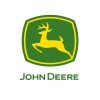
John Deere
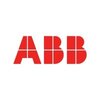
ABB

KONE
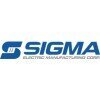
Sigma Electric Manufacturing Corporation
- Home >
- Interviews >
- Caterpillar Inc Interview Questions >
- Caterpillar Inc Engineer Trainee Interview Questions




